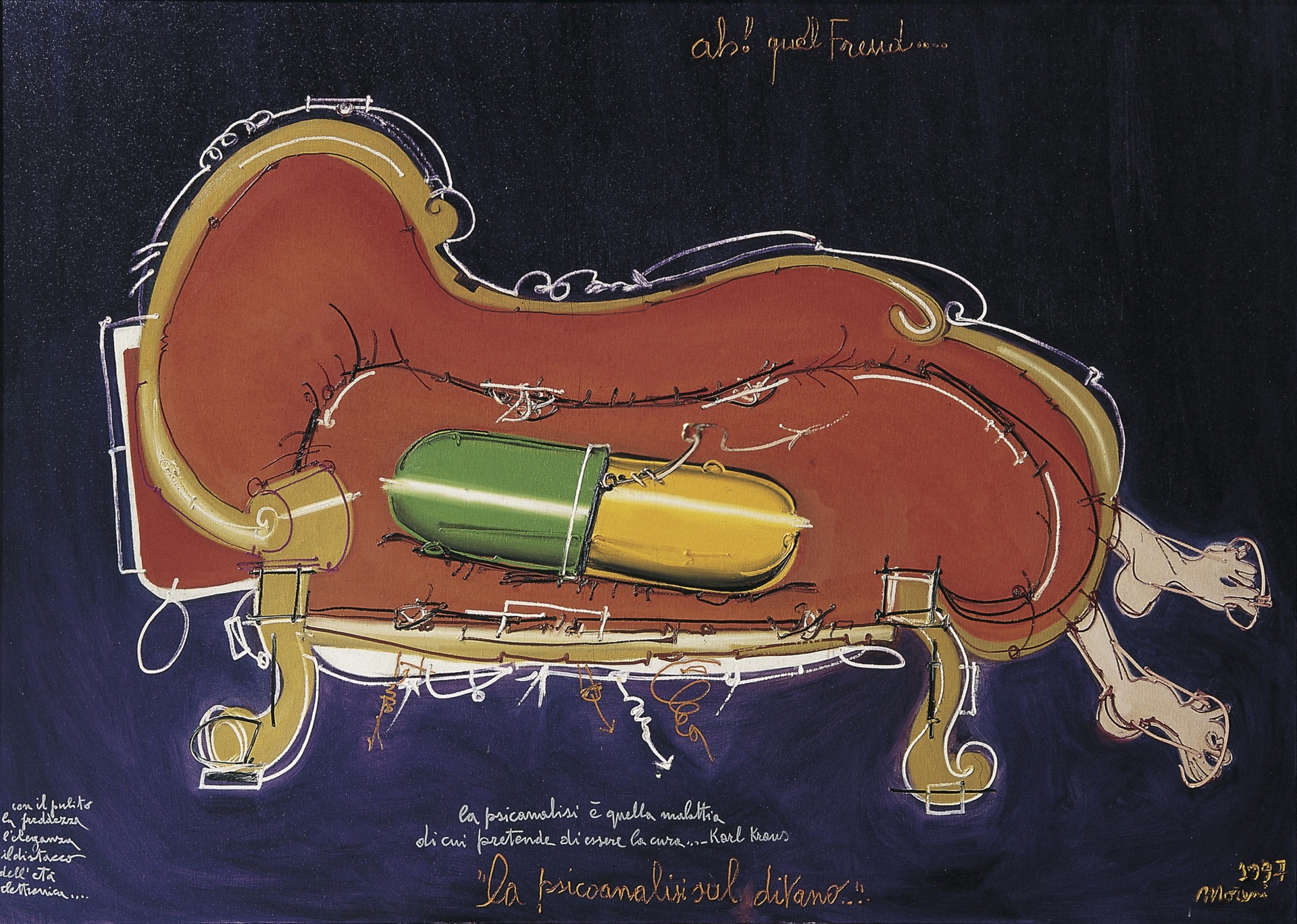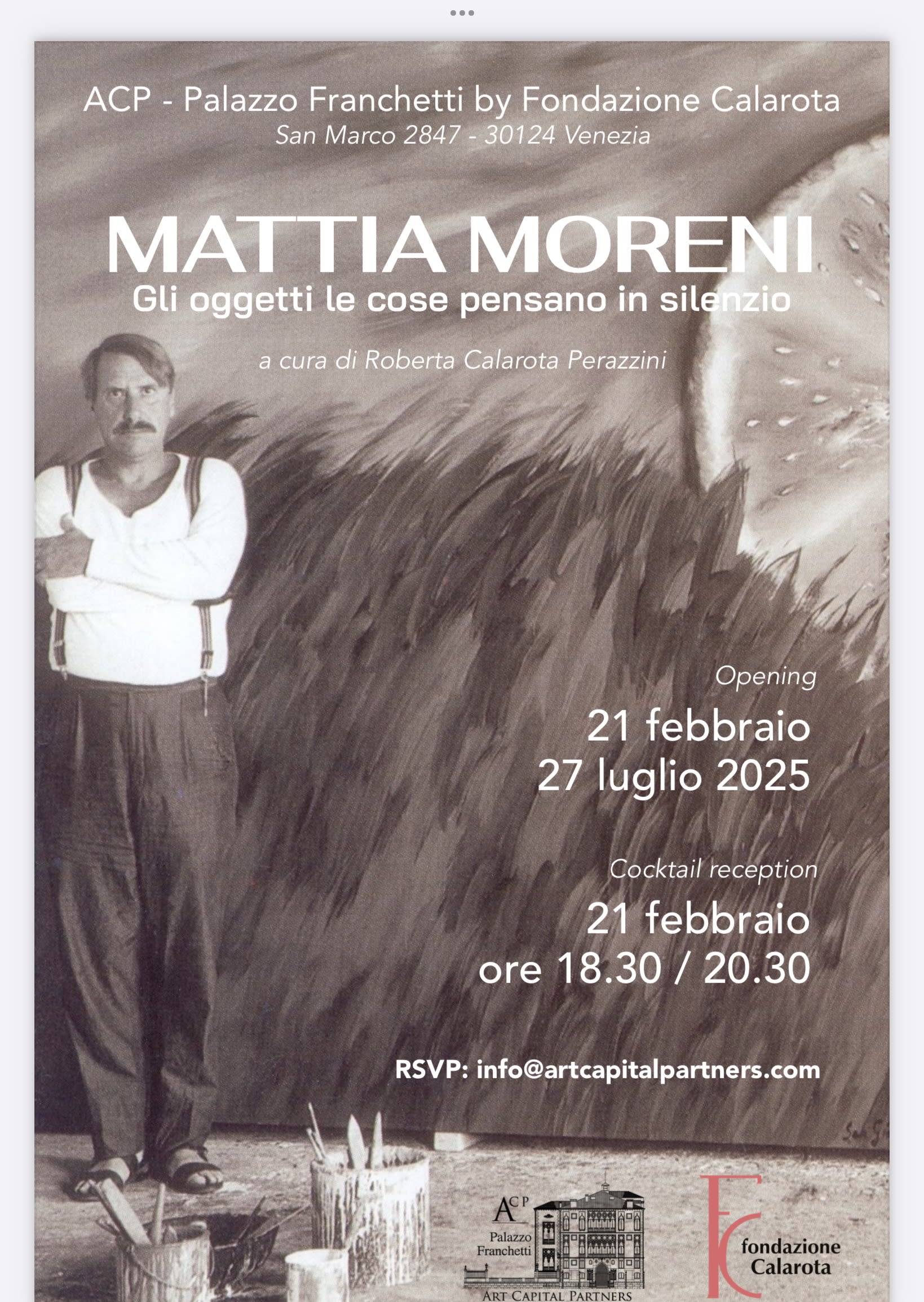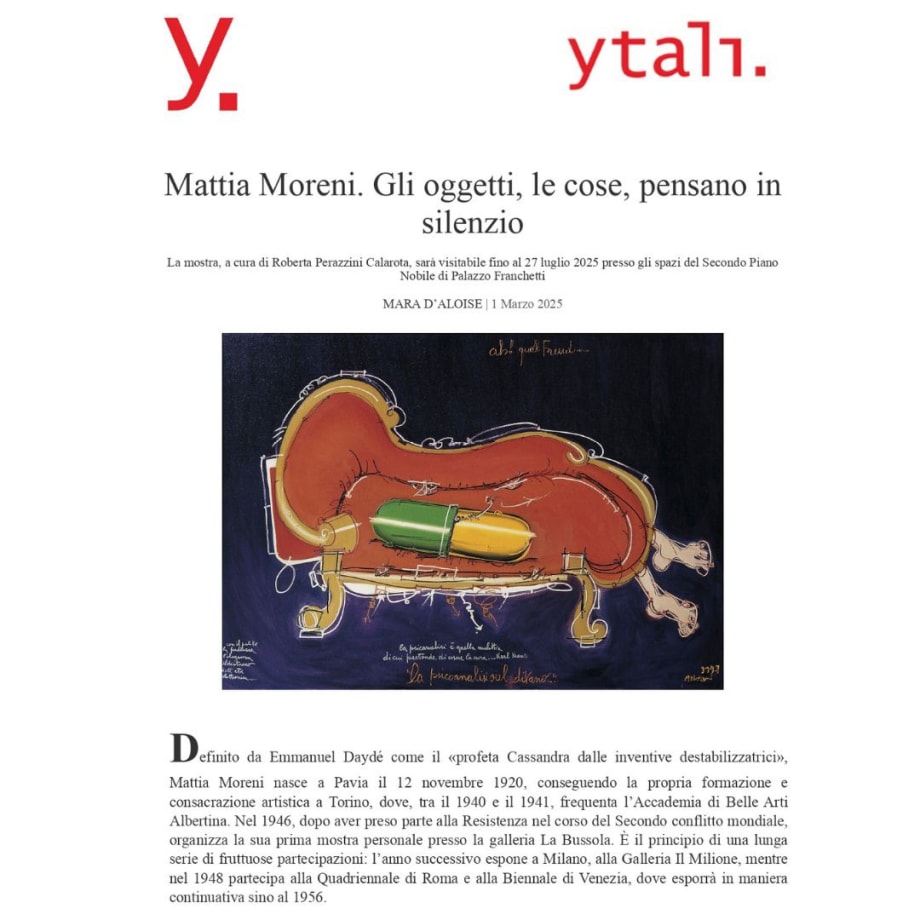
Defined by Emmanuel Daydé as the «prophet Cassandra with destabilizing inventiveness», Mattia Moreni was born in Pavia on 12nd November 1920, obtaining his training and artistic consecration in Turin, where, between 1940 and 1941, he attends the Accademia di Belle Arti Albertina. In 1946, after taking part in the Resistance during the Second World War, he organizes his first solo exhibition at the La Bussola gallery. It is the beginning of a long series of fruitful participations: the following year he exhibits in Milan, at the Galleria Il Milione, while in 1948 he participates to the Quadriennale in Rome and the Biennale in Venice, where he will exhibit continuously until 1956.
Distancing himself from the prevailing taste in Turin of those years, similar to the aesthetics of Felice Casorati, Moreni’s early years are deeply marked by international experiences fauviste and expressionist: in the dark and nervous feature of the first works, early on, aspects that will characterize the work in the future stand out. For example, the insistence on the material value of color and the tendency to make claustrophobic canvases, dominated by deformed objects without perspective depth.
Moreni's artistic research also moves away from the dualism between Abstraction and Realism promoted by the Fronte Nuovo delle Arti, and in 1952 he joins the Gruppo degli Otto led by the theoretician Lionello Venturi, alongside artists such as Emilio Vedova, Afro, Renato Birolli, Antonio Corpora, Ennio Morlotti, Giuseppe Santomaso and Giulio Turcato. His individual and collective exhibition activity continues throughout the 1950s, through participation in the São Paulo Biennial in Brazil and Documenta in Kassel, while in 1954, in Frascati, he meets the French critic Michel Tapié. This is a fundamental step in Moreni's artistic career, and he moves to Paris in 1956, remaining there for a decade. In the French capital he rented a studio in the central rue Faubourg Saint-Honoré, while in the spaces of the Galerie Rive Droite he moved ever closer to Informalism: the sign, now violent in its gestural charge, took on full aesthetic autonomy.

Mattia Moreni, The avant-garde is electronics advancing..., 1995, Courtesy Galleria d'Arte Maggiore g.a.m. Bologna/Paris/Venice
The Parisian period – characterized by major solo exhibitions, including the anthological one at the Kunstverein in Hamburg in 1964, and by the close dialogue with Informels artists of the caliber of Jackson Pollock, Willem De Kooning, Jean Dubuffet, Jean Fautrier, Alberto Burri, Mark Tobey – ends in 1966: together with his partner Poupy Pratt, the artist settles permanently in Calbane Vecchie, a town in the Romagna municipality of Brisighella. It is a voluntary isolation, motivated by personal needs and by the intolerance for the profound change in the international cultural climate, characterized by a growing commodification of art. In Brisighella, despite limiting his contacts with the artistic and institutional world, Moreni carries out his production of the last decades, before passing away on 29th May 1999.
The visit itinerary of the Second Piano Nobile of Palazzo Franchetti develops through the various artistic phases of Moreni, denoting a careful curatorial project, capable of constituting a chronologically and stylistically coherent whole. The first room, dominated by the late work Ah! quel Freud…La psicoanalisi sul divano (1997), restores the innate nonconformism of the Lombard artist, while the parable of the Informal delicately turns its gaze to the cycle of the Baracche and the Cartelli, as well as to the obligatory passage through an undisputed masterpiece such as A tutti i maldestri del mondo: Amitié, presented at the 1960 Biennale. The use of the written word now becomes essential: changes, second thoughts, errors, convulsive graphic transformations are recorded on the canvases capable of restoring Moreni's artistic genius.

Mattia Moreni, Pitiful image again, 1961, Courtesy Galleria d'Arte Maggiore g.a.m. Bologna/Paris/Venice
The presence of the Watermelon series is fundamental, which occupied the artist for twelve years. The fruit, whose naturalistic representation proceeds in a dense dialogue with nature itself – for example by depicting the watermelon, cut into segments or whole, abandoned in the meadows, or at the edge of the woodland vegetation –, soon becomes an organism subject to a disturbing metamorphosis of decomposition, to the point of assuming the identity of the female reproductive organ, in a vision rich in eroticism. In particular, it is the “American” watermelon that becomes a metaphor for the human condition: so called by the farmers of Romagna, it is closed inside plastic bags in order to accelerate its ripening, causing an anomalous growth that leads it to elongate into distorted shapes. The fruit, now an image of the female sexual organ, concludes its metamorphosis by becoming an aseptic genitalia resulting from chemical and physical alterations. Over the course of Moreni’s artistic career, the parable of this (irreversible) degradation passes from the cycle of Atrofiche and Grandi Marilù to reach the category of Regression of the species. The exhibition itinerary becomes pregnant in placing works such as Il pesce di celluloid del bambino buono, regressito – in which the soul of the infant is represented by the melancholic eye of the fish itself – and La pattumiera prende l’aspetto del gas verdastro del fetere dei politici fetonti (1983) – attributable to the short cycle of Pattumiere – in dialogue with the production of self-portraits. A 69 anni di sua età. Autoritratto n. 14 (1990) builds an unmistakable contact between Regression and the attention paid by Calarota to the broad conclusive cycle of the Humanoids, a careful reflection by Moreni on the post-organic. The cycle, culminating in the 1996 solo show in Ravenna L’umanoide tutto computer, starts a reflection on the impact of technology on everyday life, as well as on artistic practice, able to fit perfectly into the theme of the 19th International Architecture Exhibition, dedicated to different types of intelligence. The Humanoids, the result of an inexhaustible mix between human beings and computers, artificial prostheses and organic apparatuses, not only constitute the final outcome of Moreni’s artistic production, but exhaustively conclude the visit itinerary, highlighting the criterion of the curatorial and installation choices.
Cover image: Mattia Moreni, Ah! that Freud... Psychoanalysis one the couch, 1997, Courtesy Galleria d'Arte Maggiore g.a.m. Bologna/Paris/Venice





